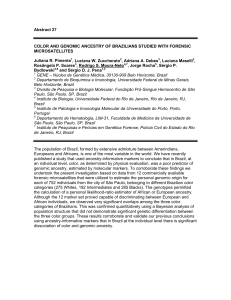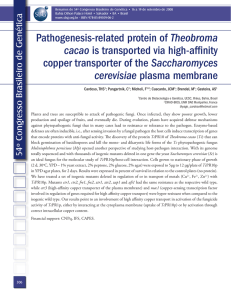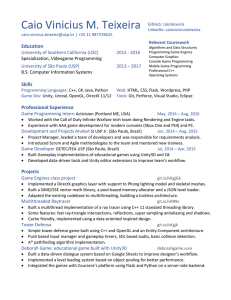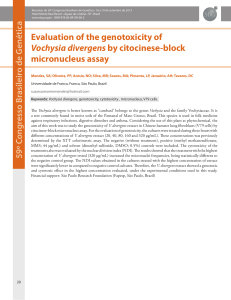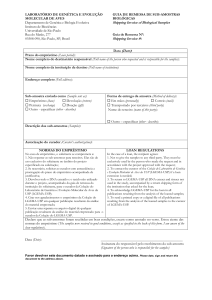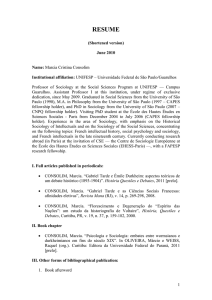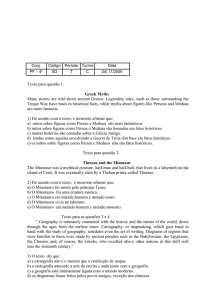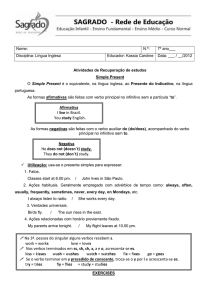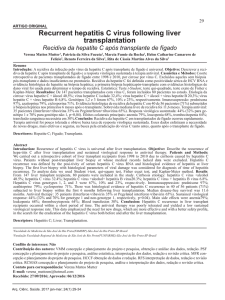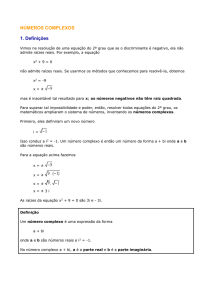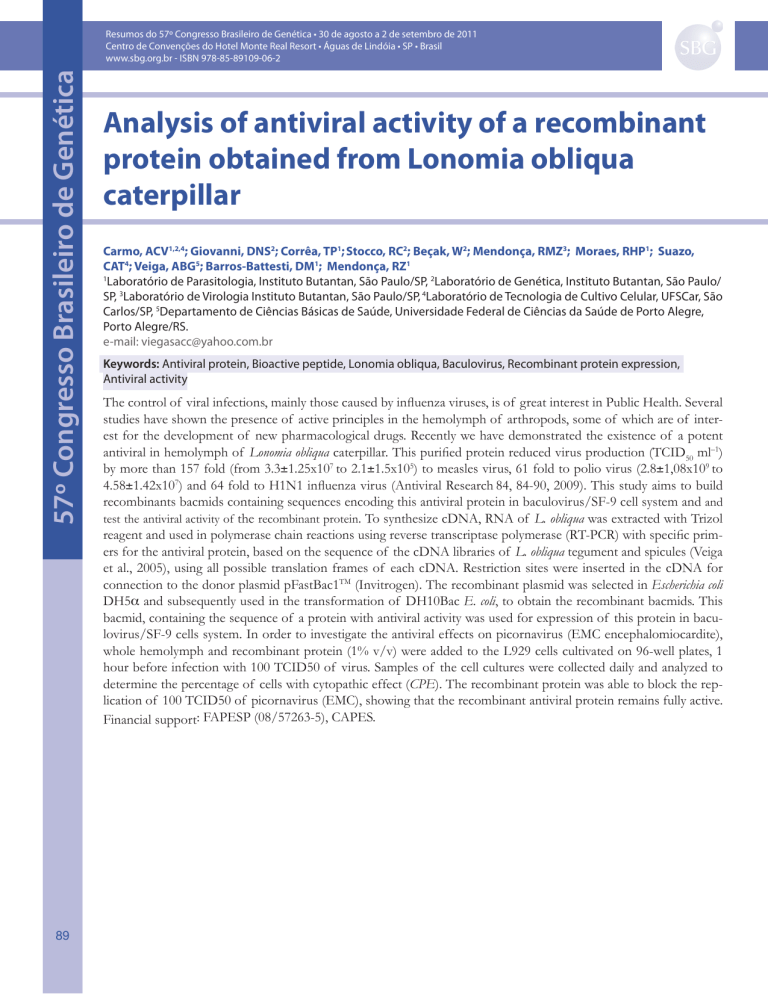
57º Congresso Brasileiro de Genética
Resumos do 57º Congresso Brasileiro de Genética • 30 de agosto a 2 de setembro de 2011
Centro de Convenções do Hotel Monte Real Resort • Águas de Lindóia • SP • Brasil
www.sbg.org.br - ISBN 978-85-89109-06-2
89
Analysis of antiviral activity of a recombinant
protein obtained from Lonomia obliqua
caterpillar
Carmo, ACV1,2,4; Giovanni, DNS2; Corrêa, TP1; Stocco, RC2; Beçak, W2; Mendonça, RMZ3; Moraes, RHP1; Suazo,
CAT4; Veiga, ABG5; Barros-Battesti, DM1; Mendonça, RZ1
1
Laboratório de Parasitologia, Instituto Butantan, São Paulo/SP, 2Laboratório de Genética, Instituto Butantan, São Paulo/
SP, 3Laboratório de Virologia Instituto Butantan, São Paulo/SP, 4Laboratório de Tecnologia de Cultivo Celular, UFSCar, São
Carlos/SP, 5Departamento de Ciências Básicas de Saúde, Universidade Federal de Ciências da Saúde de Porto Alegre,
Porto Alegre/RS.
e-mail: [email protected]
Keywords: Antiviral protein, Bioactive peptide, Lonomia obliqua, Baculovirus, Recombinant protein expression,
Antiviral activity
The control of viral infections, mainly those caused by influenza viruses, is of great interest in Public Health. Several
studies have shown the presence of active principles in the hemolymph of arthropods, some of which are of interest for the development of new pharmacological drugs. Recently we have demonstrated the existence of a potent
antiviral in hemolymph of Lonomia obliqua caterpillar. This purified protein reduced virus production (TCID50 ml–1)
by more than 157 fold (from 3.3±1.25x107 to 2.1±1.5x105) to measles virus, 61 fold to polio virus (2.8±1,08x109 to
4.58±1.42x107) and 64 fold to H1N1 influenza virus (Antiviral Research 84, 84-90, 2009). This study aims to build
recombinants bacmids containing sequences encoding this antiviral protein in baculovirus/SF-9 cell system and and
test the antiviral activity of the recombinant protein. To synthesize cDNA, RNA of L. obliqua was extracted with Trizol
reagent and used in polymerase chain reactions using reverse transcriptase polymerase (RT-PCR) with specific primers for the antiviral protein, based on the sequence of the cDNA libraries of L. obliqua tegument and spicules (Veiga
et al., 2005), using all possible translation frames of each cDNA. Restriction sites were inserted in the cDNA for
connection to the donor plasmid pFastBac1TM (Invitrogen). The recombinant plasmid was selected in Escherichia coli
DH5α and subsequently used in the transformation of DH10Bac E. coli, to obtain the recombinant bacmids. This
bacmid, containing the sequence of a protein with antiviral activity was used for expression of this protein in baculovirus/SF-9 cells system. In order to investigate the antiviral effects on picornavirus (EMC encephalomiocardite),
whole hemolymph and recombinant protein (1% v/v) were added to the L929 cells cultivated on 96-well plates, 1
hour before infection with 100 TCID50 of virus. Samples of the cell cultures were collected daily and analyzed to
determine the percentage of cells with cytopathic effect (CPE). The recombinant protein was able to block the replication of 100 TCID50 of picornavirus (EMC), showing that the recombinant antiviral protein remains fully active.
Financial support: FAPESP (08/57263-5), CAPES.


